Soowon Kim
Dynamic Neural Communication: Convergence of Computer Vision and Brain-Computer Interface
Nov 14, 2024


Abstract:Interpreting human neural signals to decode static speech intentions such as text or images and dynamic speech intentions such as audio or video is showing great potential as an innovative communication tool. Human communication accompanies various features, such as articulatory movements, facial expressions, and internal speech, all of which are reflected in neural signals. However, most studies only generate short or fragmented outputs, while providing informative communication by leveraging various features from neural signals remains challenging. In this study, we introduce a dynamic neural communication method that leverages current computer vision and brain-computer interface technologies. Our approach captures the user's intentions from neural signals and decodes visemes in short time steps to produce dynamic visual outputs. The results demonstrate the potential to rapidly capture and reconstruct lip movements during natural speech attempts from human neural signals, enabling dynamic neural communication through the convergence of computer vision and brain--computer interface.
EEG-Based Speech Decoding: A Novel Approach Using Multi-Kernel Ensemble Diffusion Models
Nov 14, 2024


Abstract:In this study, we propose an ensemble learning framework for electroencephalogram-based overt speech classification, leveraging denoising diffusion probabilistic models with varying convolutional kernel sizes. The ensemble comprises three models with kernel sizes of 51, 101, and 201, effectively capturing multi-scale temporal features inherent in signals. This approach improves the robustness and accuracy of speech decoding by accommodating the rich temporal complexity of neural signals. The ensemble models work in conjunction with conditional autoencoders that refine the reconstructed signals and maximize the useful information for downstream classification tasks. The results indicate that the proposed ensemble-based approach significantly outperforms individual models and existing state-of-the-art techniques. These findings demonstrate the potential of ensemble methods in advancing brain signal decoding, offering new possibilities for non-verbal communication applications, particularly in brain-computer interface systems aimed at aiding individuals with speech impairments.
Neural Speech Embeddings for Speech Synthesis Based on Deep Generative Networks
Dec 10, 2023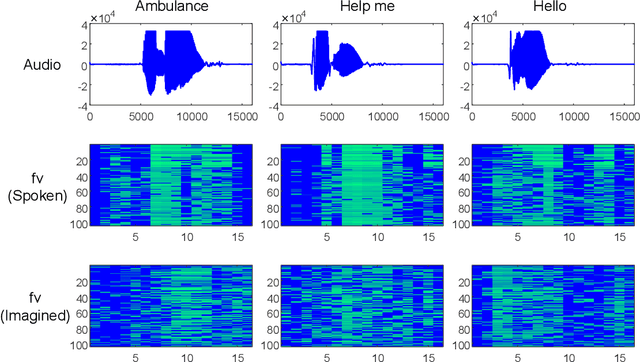
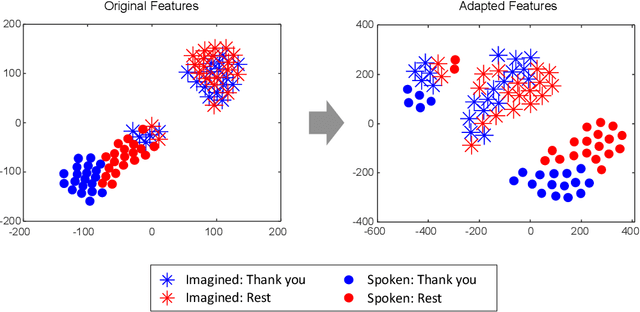
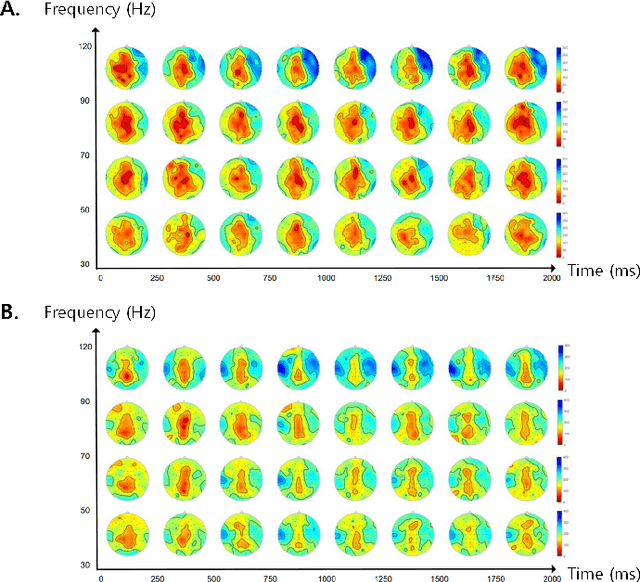
Abstract:Brain-to-speech technology represents a fusion of interdisciplinary applications encompassing fields of artificial intelligence, brain-computer interfaces, and speech synthesis. Neural representation learning based intention decoding and speech synthesis directly connects the neural activity to the means of human linguistic communication, which may greatly enhance the naturalness of communication. With the current discoveries on representation learning and the development of the speech synthesis technologies, direct translation of brain signals into speech has shown great promise. Especially, the processed input features and neural speech embeddings which are given to the neural network play a significant role in the overall performance when using deep generative models for speech generation from brain signals. In this paper, we introduce the current brain-to-speech technology with the possibility of speech synthesis from brain signals, which may ultimately facilitate innovation in non-verbal communication. Also, we perform comprehensive analysis on the neural features and neural speech embeddings underlying the neurophysiological activation while performing speech, which may play a significant role in the speech synthesis works.
Enhanced Generative Adversarial Networks for Unseen Word Generation from EEG Signals
Nov 14, 2023Abstract:Recent advances in brain-computer interface (BCI) technology, particularly based on generative adversarial networks (GAN), have shown great promise for improving decoding performance for BCI. Within the realm of Brain-Computer Interfaces (BCI), GANs find application in addressing many areas. They serve as a valuable tool for data augmentation, which can solve the challenge of limited data availability, and synthesis, effectively expanding the dataset and creating novel data formats, thus enhancing the robustness and adaptability of BCI systems. Research in speech-related paradigms has significantly expanded, with a critical impact on the advancement of assistive technologies and communication support for individuals with speech impairments. In this study, GANs were investigated, particularly for the BCI field, and applied to generate text from EEG signals. The GANs could generalize all subjects and decode unseen words, indicating its ability to capture underlying speech patterns consistent across different individuals. The method has practical applications in neural signal-based speech recognition systems and communication aids for individuals with speech difficulties.
Brain-Driven Representation Learning Based on Diffusion Model
Nov 14, 2023Abstract:Interpreting EEG signals linked to spoken language presents a complex challenge, given the data's intricate temporal and spatial attributes, as well as the various noise factors. Denoising diffusion probabilistic models (DDPMs), which have recently gained prominence in diverse areas for their capabilities in representation learning, are explored in our research as a means to address this issue. Using DDPMs in conjunction with a conditional autoencoder, our new approach considerably outperforms traditional machine learning algorithms and established baseline models in accuracy. Our results highlight the potential of DDPMs as a sophisticated computational method for the analysis of speech-related EEG signals. This could lead to significant advances in brain-computer interfaces tailored for spoken communication.
Diff-E: Diffusion-based Learning for Decoding Imagined Speech EEG
Jul 26, 2023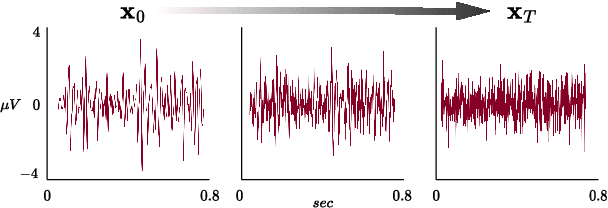
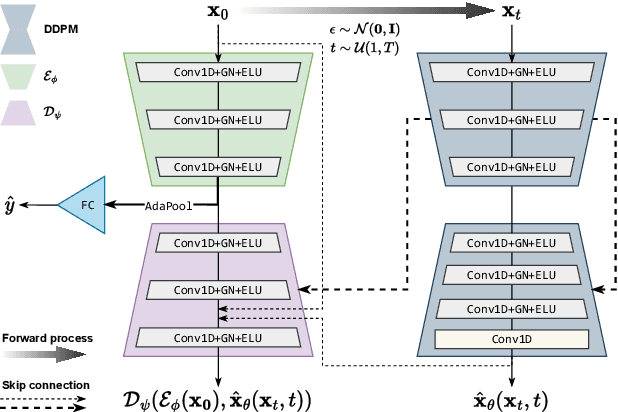
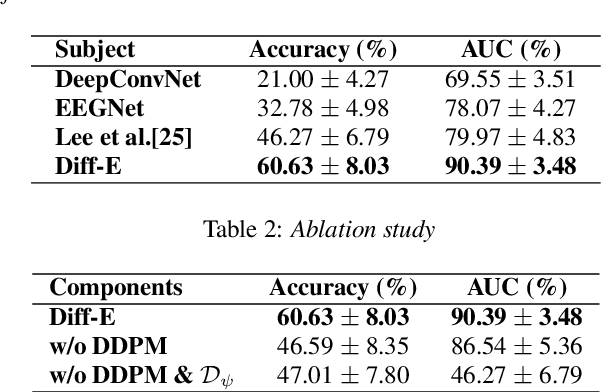
Abstract:Decoding EEG signals for imagined speech is a challenging task due to the high-dimensional nature of the data and low signal-to-noise ratio. In recent years, denoising diffusion probabilistic models (DDPMs) have emerged as promising approaches for representation learning in various domains. Our study proposes a novel method for decoding EEG signals for imagined speech using DDPMs and a conditional autoencoder named Diff-E. Results indicate that Diff-E significantly improves the accuracy of decoding EEG signals for imagined speech compared to traditional machine learning techniques and baseline models. Our findings suggest that DDPMs can be an effective tool for EEG signal decoding, with potential implications for the development of brain-computer interfaces that enable communication through imagined speech.
Subject-Independent Classification of Brain Signals using Skip Connections
Jan 19, 2023
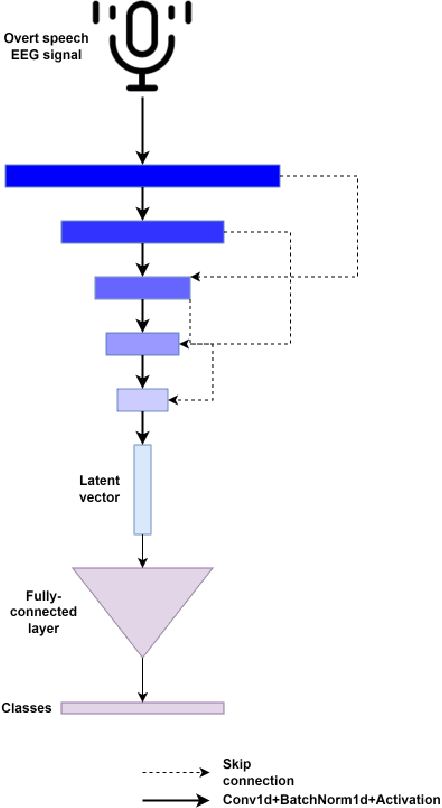

Abstract:Untapped potential for new forms of human-to-human communication can be found in the active research field of studies on the decoding of brain signals of human speech. A brain-computer interface system can be implemented using electroencephalogram signals because it poses more less clinical risk and can be acquired using portable instruments. One of the most interesting tasks for the brain-computer interface system is decoding words from the raw electroencephalogram signals. Before a brain-computer interface may be used by a new user, current electroencephalogram-based brain-computer interface research typically necessitates a subject-specific adaption stage. In contrast, the subject-independent situation is one that is highly desired since it allows a well-trained model to be applied to new users with little or no precalibration. The emphasis is on creating an efficient decoder that may be employed adaptively in subject-independent circumstances in light of this crucial characteristic. Our proposal is to explicitly apply skip connections between convolutional layers to enable the flow of mutual information between layers. To do this, we add skip connections between layers, allowing the mutual information to flow throughout the layers. The output of the encoder is then passed through the fully-connected layer to finally represent the probabilities of the 13 classes. In this study, overt speech was used to record the electroencephalogram data of 16 participants. The results show that when the skip connection is present, the classification performance improves notably.
 Add to Chrome
Add to Chrome Add to Firefox
Add to Firefox Add to Edge
Add to Edge